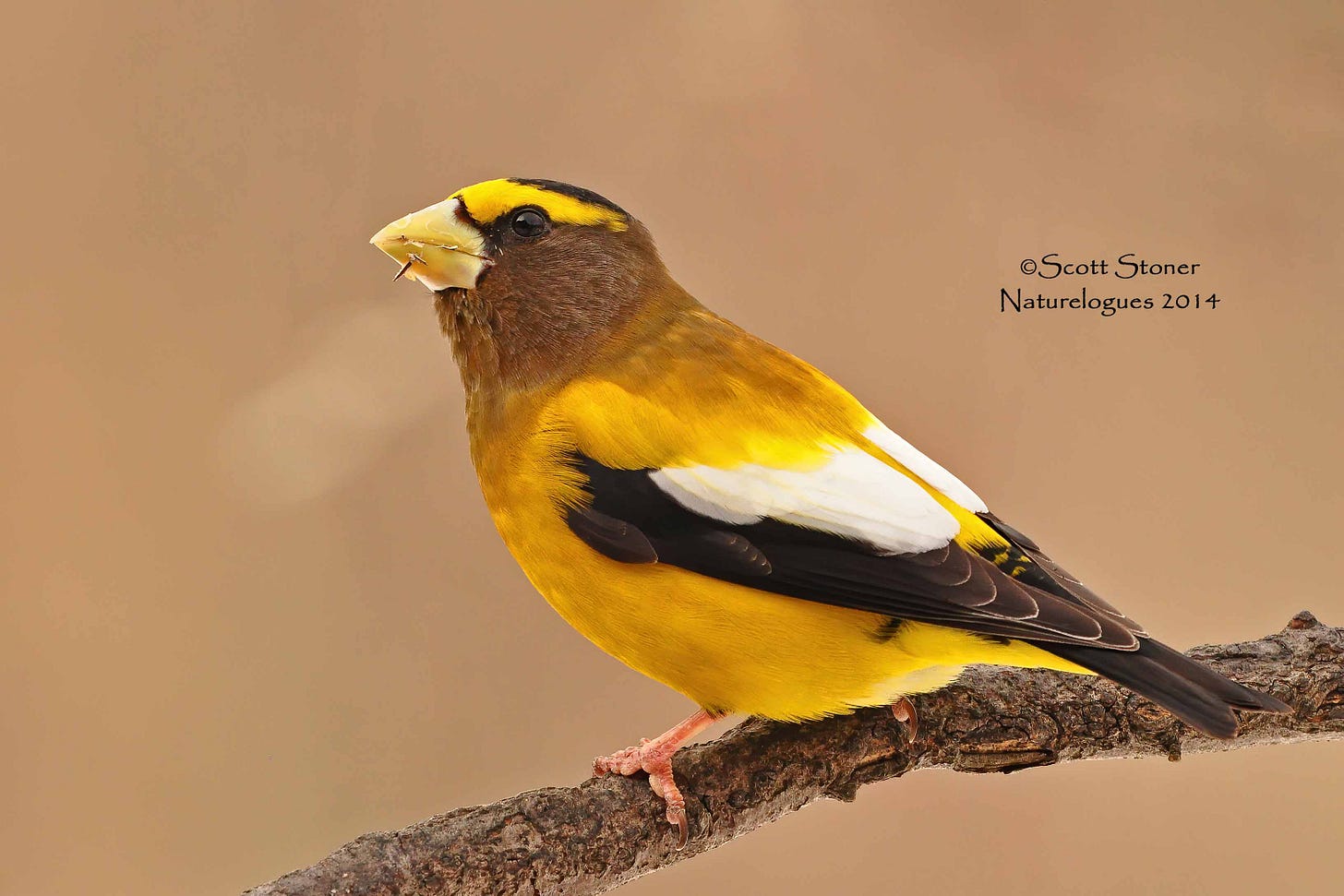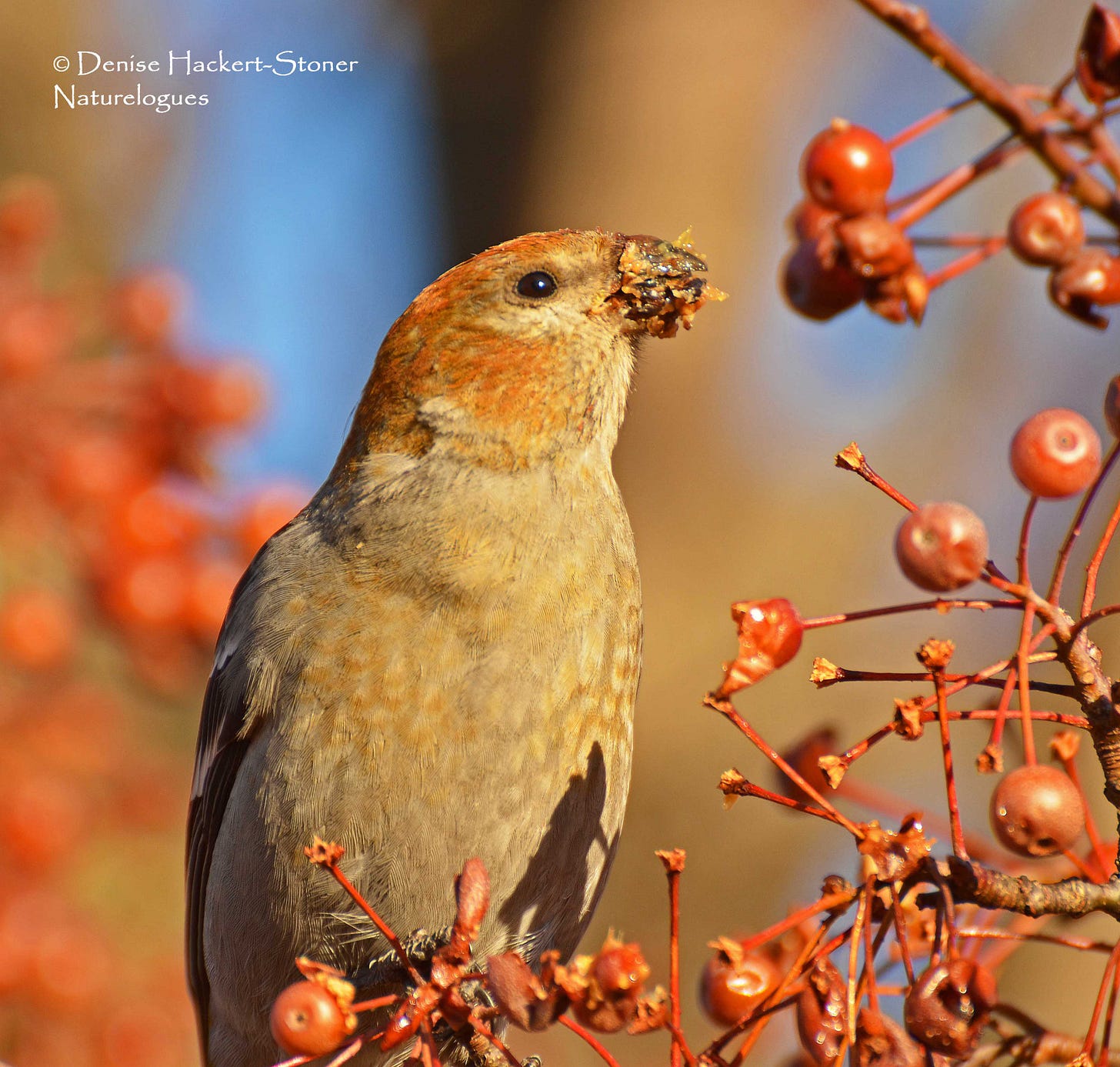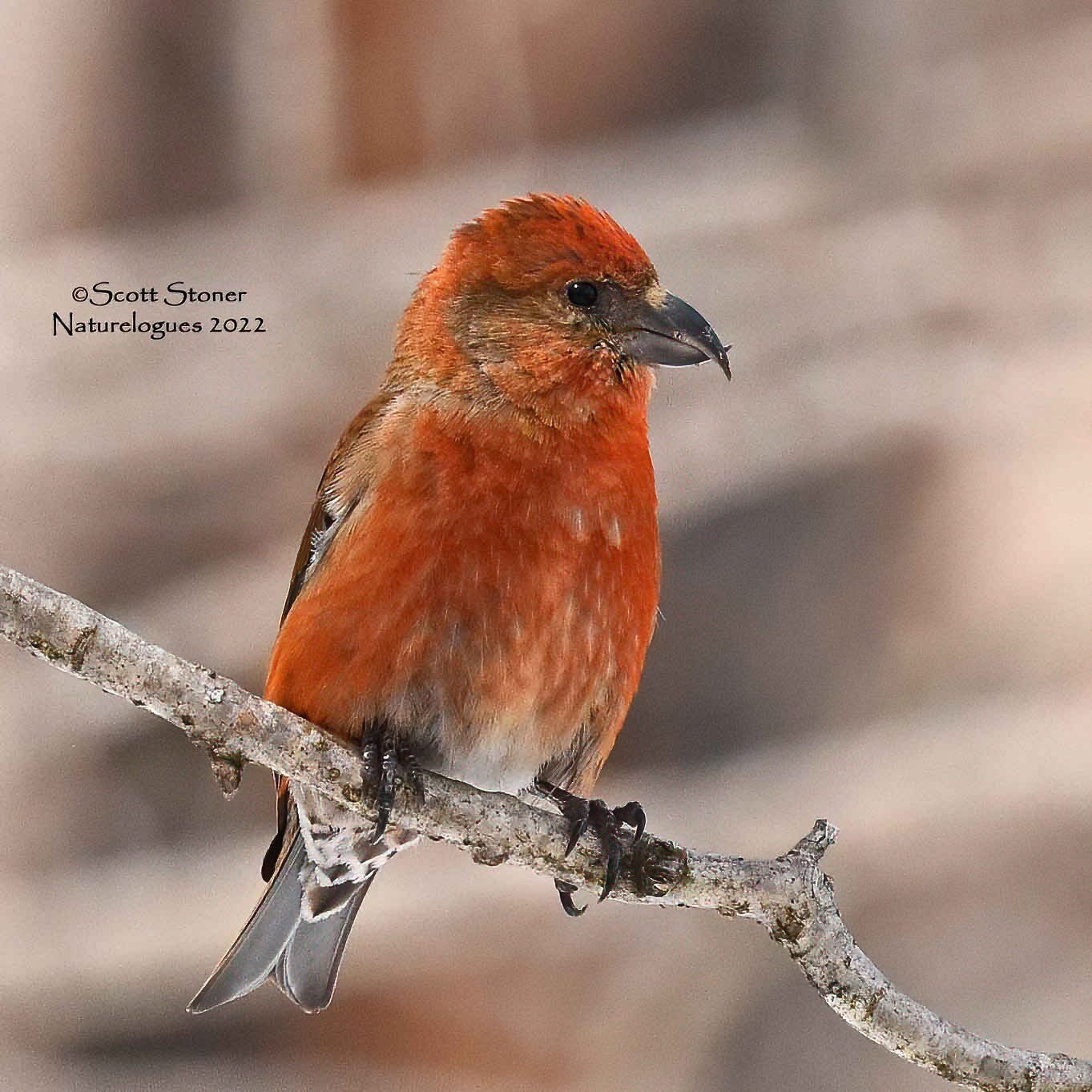Winter of Finches
The Winter Finch Forecast is out! Eagerly anticipated, this annual prognostication can result in significant enthusiastic expectation of a winter with woods and bird feeders full of colorful avian visitors in the Northeast US!
“Winter finches” is a collective term for Purple Finches, Pine Siskins, Pine Grosbeaks, Common and Hoary Redpolls, Red Crossbills, White-winged Crossbills, and Evening Grosbeaks. Many of these live in the forests of Canada, consuming the fruits and seeds of boreal trees to survive the winter. However, this food supply is cyclical, driving masses of birds south in search of sustenance when there is a major food crop failure. A major such “irruption” occurred three winters ago, driven by both boom and bust, as high levels of food led to a surge in bird populations in the 2020 breeding season, followed by a crash in winter food supply. More than a typical irruption, with every species of boreal finch pouring out of the forests and heading south in search of food, that year’s event was termed a “superflight” by finch researchers! (Audubon.org). It was truly a “winter of finches”!
My own interest in winter finches began as a child on New York State’s Long Island, where we occasionally had colorful Evening Grosbeaks at our backyard feeders. One winter, a couple dozen amazingly tame Red Crossbills, with their oddly shaped bills to enable feeding on pine cone seeds, stayed for several weeks! I could practically walk up to them at a platform feeder on our deck! Now living in “upstate” New York, winter finches have been of mixed success in my annual quest for birds and bird photos! Let’s take a closer look.
Evening Grosbeak
This large colorful finch will sometimes visit bird feeders en masse, seeking and consuming huge amounts of black oil sunflower seed before moving on. This large-billed “gross beak” is often considered the most sought after of all the winter finches. Sadly, and still somewhat mysteriously, its numbers have plummeted over recent decades. A seminal Cornell study showed a decline of 90 percent over the past five decades. It does not appear to be habitat loss, as much of the coniferous and mixed forest they breed in and live in remains. They do feed on spruce budworms, which are cyclical, and other species’ numbers rise and drop with its boom and bust. But the decline of the Evening Grosbeak has been steady.
Every winter we set the table for these wonderful birds, but never has one visited in 25 years, although there have been sporadic reports of them at feeders here in New York’s Capital Region from time to time. We have occasionally seen them in the mountains, however, including New York’s Adirondacks and Vermont’s Green Mountains, where a kind friend invited us photograph them at their house several years ago!
Pine Grosbeak
Another grosbeak is the also colorful Pine Grosbeak; this species is a fairly common winter visitor especially to the northern reaches of the greater Capital Region of New York, such as Washington, Warren, and northern Saratoga Counties. Pine Grosbeaks prefer berries, but will also stop at feeders for seed. We’ve generally seen them at fruit trees, messily and voraciously eating. This is consistent with the Cornell Lab’s description that they eat fruit by biting through them, crushing the seed, and discarding the pulp. There sure was a lot of pulp being discarded! Their beaks, and indeed, often most of their faces, were covered by the remnants of the fruits they were devouring. It reminds me of how my poor mother bemoaned my own eating habits as a child!
Common Redpoll
Common Redpolls are more common, often seen in people’s yards, at bird feeders, and brushy, weedy areas. Known for their red cap (poll) these small finches have seed-cracking but not oversize bills, and are often found in groups. We have had them in our yard in varying numbers over the years, but not every year. There was a large group of them adjacent to the Albany International Airport for several weeks three winters ago, affording good viewing for many local birders! Watch for them with greater likelihood of success at higher elevations such as the Helderbergs and Adirondacks in the winter.
Pine Siskin
Another more common visitor is the Pine Siskin, a very small finch a tiny seed-cracking bill and yellow shafts of its feathers. Watch for it at your feeders and in higher elevation areas where Common Redpoll are often seen.
White-winged Crossbill
Red Crossbill
Finally, the crossbills!
There are two species of these unusual finches, White-winged Crossbill and Red Crossbill, often seen in the Northeast.
Red Crossbills can nest any time of the year, and have been seen for several winters in areas of the Albany Pine Bush Preserve. Their specialized bills enable them to feed on the seeds of pines and other cone-bearing trees, accessing a food source. We have also observed them drinking from puddles at the edge of the Pine Bush! While we have made numerous trips to the Adirondacks to observe and photograph this fascinating species, it is exciting that they can also be found so close to home!
The related White-winged Crossbill also can begin breeding any month of the year, have been found in rural higher elevations of Albany County in the winter, and eat in a similar manner as Red-Crossbills. Both species can often be found “gritting” along sanded winter roads in the Adirondacks, which helps them grind food in their gizzards.
So, will 2023-2024 be a “winter of finches” in the Northeastern US? The finch forecast offers some promise. Check it out for more details, and especially, put out your seed, watch your feeders, and if you can, get out and look for them!
Sources and Resources for more information:
The 25th Annual Finch Forecast: https://finchnetwork.org/winter-finch-forecast-2023-2024
Check out the work of Matthew Young, founder of the Finch Research Network at finchnetwork.org or find “The Finchmasters” on Facebook.
For more on the decline of bird populations including Evening Grosbeak, see Rosenberg, K. V. et al. 2019. Decline of the North American Avifauna. Science 365(6461))
Cornell Lab of Ornithology website: Allaboutbirds.org for species-specific information









